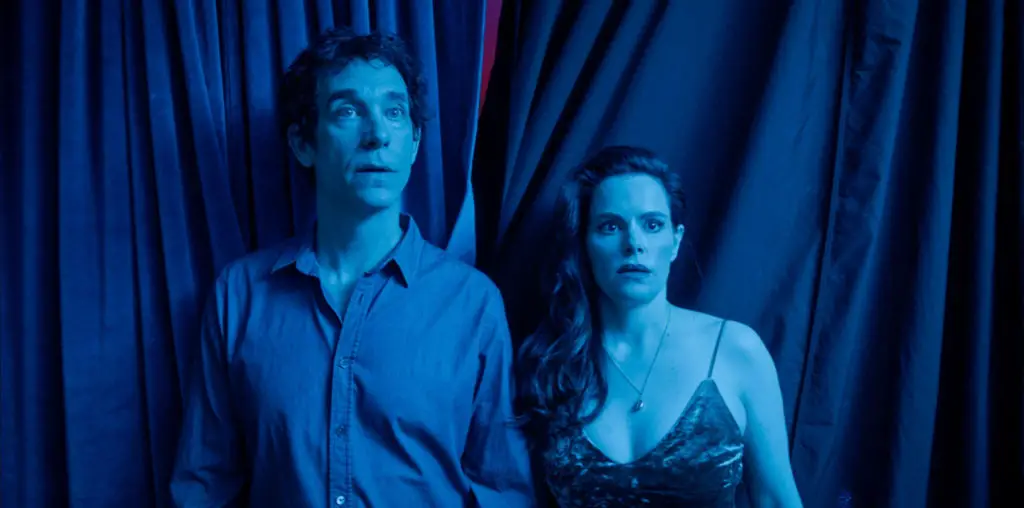
Not many movies, whatever the genre, can honestly be referred to as “groundbreaking.” Horror films like “Psycho” and “The Exorcist” and “Black Christmas” gave rise to dozens of imitators following along to fill the public’s newly created demand for slasher flicks or Satanic tomfoolery or what have you. Wes Craven’s “The Last House on the Left,” released in 1972 as the love generation was finally coming to grips with the utter collapse of their ideals, turned the concept of the nuclear family on its ear and ushered in a new era of cinematic brutality. I’ll leave it to the reader to decide how well that’s worked out for us.
The inevitable remake, directed by relative newcomer Dennis Iliadis from a script by Carl Ellsworth and Adam Alleca, stays fairly close the original story: young Mari Collingwood (Sara Paxton) and her friend Paige run afoul of escaped convict Krug (Garret Dillahunt) and his gang of psychos. The gang murders Paige and Krug rapes Mari before shooting her and leaving her for dead. As luck would have it, the perpetrators end up seeking shelter at a remote lake house inhabited by Mari’s parents (Tony Goldwyn and Monica Potter). When Mari shows up alive and mom and dad realize who their guests are, they call the police and let the criminal justice system do its job. Ha ha, no…in truth, they exact retribution on the scum in a number of creative ways.
Just so we’re clear, the original “Last House” wasn’t very good. The acting was atrocious, the tone in many places was more comedic than horrific, and the soundtrack sounded like what you’d get from combining “Benny Hill” with the Guess Who. Its notoriety comes primarily from its unfettered cruelty, which is the one area the remake can’t hope to match, even though it does improve on the original in a few ways aside from the obvious (acting, effects). In particular, Iliadis shows a surprisingly able hand, giving the early scenes an air of poignancy even beyond the anticipation of what’s coming (and before we find out about the recent death of Mari’s brother).
Other than that, there’s little to set this latest “Last House” apart from other revenge-themed horror flicks of the past 30 years. The rape scene is, admittedly, as brutal as any I’ve seen in recent memory, but much of what Iliadis shows us is a direct riff on the original: Paige’s attempted escape and murder, for example, and the way the camera lingers over Mari as she gets dressed to go to town echoes Craven’s opening shower scene – but where Craven was arguably trying to set the audience up for future discomfort when the girl they were ogling in the opening credits gets brutalized in act two, Iliadis is simply cranking our outrage meter so we’ll predictably detonate with fervent exultation when vengeance is finally meted out.
Let’s not forget that the original, while exploitative, made a point about the dehumanizing nature of violence – whether committed by vicious criminals or wronged parents – as well as the shadow falling across American society in the wake of the Manson Family murders and the end of the hippie era. This concept had already disappeared six years later with the release of the revenge “classic” “I Spit on Your Grave,” and now audiences will cheer maniacally as Dr. and Mrs. Collingwood exact gory retribution on their daughter’s assailants with nary an afterthought. In fact, when dad finally has Krug at his mercy in the film’s final scene, he doesn’t make him die by inches (which is what every father watching this would have done in his place); he goes for the gimmick death. All of this proves Iliadis has no interest in larger questions of human nature, but simply wants to give us that sweet payback money shot.
And what of these criminals? Why was Krug going to prison? Who is Sadie and why is she tagging along? Why does Krug’s son Justin (Spencer Treat Clark), who’s obviously sickened by his father’s behavior, stick around? Craven at least went to some effort to give his villains some back story, but we’re left to guess.
Finally, as is the case with almost every remake that gets released, we have to ask a few questions. First, is a creatively bankrupt Hollywood capable of bringing anything new to the property? Was the movie in question motivated by anything other than its potential benefit to the studios bottom line? Finally, what is the point of dusting off a 35-year old property when a) the bulk of your target audience has never heard of the original, and b) the movie you’re redoing is considered one of the classics of its genre?
If the response to your first questions is, “No” then you’ve already got your third answer.
